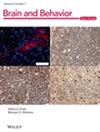Longitudinal Suicide Risk in Children and Adolescents With Attention Deficit and Hyperactivity Disorder: A Systematic Review and Meta-Analysis
Abstract
Background/Aims
Attention-deficit/hyperactivity disorder (ADHD) is one of the most common mental disorders among young people and significantly affects their quality of life. Previous research suggests an increased risk of suicidal behavior among individuals with ADHD; however, this has not yet been investigated in a meta-analysis of long-term studies. The primary aim of this study was to conduct an updated systematic review of longitudinal studies on ADHD and suicidality supplemented by meta-analytic calculations.
Methods
A systematic search was conducted across the following databases: OVID Medline, OVID PsychInfo, PubMed, Scopus, and Web of Science. Only longitudinal studies were included, in which most participants were under 18 years of age at baseline, had a clinical ADHD diagnosis, and provided sufficient data about suicidal behavior.
Results
In total, nine studies were included in both the meta-analysis and narrative review. The average odds ratios were significant and small to moderate in size for the following aspects: overall suicidality (OR = 3.336, 95% CI: 2.201; 5.057, p < 0.001), suicidal ideation (OR = 3.956, 95% CI: 1.996; 7.841, p < 0.001), suicide attempt (OR = 3.344, 95% CI: 1.682; 6.650, p = 0.001), and death (OR = 3.891, 95% CI: 2.103; 7.198, p < 0.001). The number of participants with ADHD ranged from 104 to 86,670, with a mean age between 5.2 and 14.94 years old, and the majority were male. Suicide behavior was more common in the ADHD combined subtype and the hyperactive/impulsive subtype. There are conflicting results regarding sex differences and the role of comorbidities.
Conclusions
The current systematic review and meta-analysis confirms previous findings that individuals with ADHD are at an elevated risk for suicidal behavior. However, this relationship is heterogeneous and complex, with significant differences across ADHD subtypes, age groups, sexes, comorbidities, and social issues, all of which play important roles in the development of suicidal behavior.


 求助内容:
求助内容: 应助结果提醒方式:
应助结果提醒方式:


